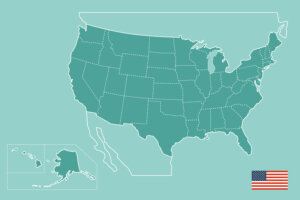Sections of This Topic Include
What is a Pricing Analysis?
Pricing Strategies
Additional Perspectives on Determining What Price You Should
Charge
Also, consider
Related Library Topics
Learn More in the Library’s Blogs Related to Market Pricing
In addition to the articles on this current page, also see the following blogs
that have posts related to Market Pricing. Scan down the blog’s page to see
various posts. Also, see the section “Recent Blog Posts” in the sidebar
of the blog or click on “next” near the bottom of a post in the blog.
The blog also links to numerous free related resources.
Library’s Marketing Blog
Library’s Public
and Media Relations Blog
What is a Pricing Analysis?
© Copyright Carter McNamara, MBA, PhD
Marketing should include pricing analysis to decide how much to charge customers
for a product or service and how that charge should be done, for example, as
a fixed fee, sliding-fee scale, discounts, or monthly payments.
Several major factors influence the pricing of a product or service. Strategic
goals greatly influence pricing. For example, if the business really wants to
get into a new market, then it might charge lower than usual prices in order
to generate more customers who buy the service. The business might consider
changing pricing if the demand for its products is very high or low. Competitor
pricing also has a great effect. If competitors are charging much less, then
the business might do well to lower prices. Similarly, if the competitor is
charging much more, then the business might consider increasing its own prices.
In this pricing analysis, consider: Is your business recouping your costs (time,
money, materials, etc.) to provide it? Is it affordable to customers? What about
volume or other forms of discounts? What should be the new prices, if any? How
do you know?
Pricing Strategies
© Copyright Rolfe Larson
Figuring out how to price your products or services is often very challenging,
especially for a new venture. Yet you need a pricing strategy for your business
plan, to determine your break-even point and profitability, and of course to
launch your business. Here are some tips on how to make that decision:
Ultimately, the right price is usually the highest price customers will find
attractive — that is to say, that they will find meets or exceeds their
value expectations for the product or service you’re offering to them.
That’s much easier said than done, so let’s start with some steps
for getting there.
First, Determine Your Unit Costs
Generally, this should be relatively easy. What will it cost you to purchase,
produce and sell your products? You may not know the precise figure, but you
should have a pretty good idea by the time you write your business plan. Generally
speaking, that represents your price floor; sell below that and you lose money.
Next, determine how customers value your products
This is where market research is needed. The good news is that customers will
tell you how much they’ll pay — if you can find the right way to
ask. You can’t just ask them directly, for tons of research show that
what they say and what they’ll do are two completely different realities.
But what you can do is find out what they pay for more or less comparable things,
and how they value various attributes of your product or service, particularly
those different from your competitors. Be sure to study the pricing strategies
of your competitors. Not necessarily to imitate but to recognize that your customers
will be comparing what you offer (product, price, service) with what they offer.
Here are several of the most common pricing strategies:
Penetration Pricing
This is the low-cost approach, where you initially offer a price lower than
your competitor’s for the purpose of attracting price-sensitive customers
quickly. The downside of course is that you squeeze your profits; indeed in
many cases, new ventures choose to price below cost to bring in those early customers.
The logic is that over time you become more efficient and can take advantage
of bulk purchasing of raw materials, such that you begin to achieve profitability
at that low price. The other downside is that your competitors might just match
your price.
Premium Pricing
This kind of pricing is coupled with providing superior benefits or service
compared to your competitors, to justify that higher price. Sometimes a premium
price will be charged for some products to attract customers who want that premium
quality, with other products, are priced lower to attract those who are more
value-focused. A related pricing strategy is called Complementary Pricing, or
Loss Leader Pricing, where you charge and promote a super low price for one
product to bring folks “in the door,” but then “upsell”
them for something else more expensive at the point of sale.
Price Bundling
This is a common strategy for getting customers to buy more of your products,
by offering a deal for buying a package. Purchase internet access along with
your phone service for a discounted price. This strategy can be very effective
in that the customer perceives value, while the provider increases sales and,
ideally, a long-term customer who spends more for each purchase.
New Customer Pricing
Sometimes called experience pricing, this involves offering a low initial price
for new customers, occasionally below cost, to get customers to “try”
your product. It’s a one-time price, offered in hopes that while they’ll
come in for the low price, they’ll come back for the high quality. This
is sometimes done with special coupons, and, in today’s world, is often
facilitated by group purchasing services such as Groupon.
Additional Perspectives on What Price You Should
Charge
Pricing
Products and Services Accurately
Selling
a Price Increase: 9 Things Not To Do
Market
Price (Wikipedia)
Top 10 Pricing Mistakes
Case Study: How to Raise Prices
The ABCs of Pricing
Pricing Strategies (Part 1)
Pricing Strategies (Part 2)
Learn More in the Library’s Blogs Related to This Topic
In addition to the articles on this current page, also see
the following blogs have posts related to this topic. Scan
down the blog’s page to see various posts. Also, see the section
“Recent Blog Posts” in the sidebar of the blog or click
on “next” near the bottom of a post in the blog. The
blog also links to numerous free related resources.
Library’s
Marketing Blog
Library’s
Public and Media Relations Blog
For the Category of Marketing:
To round out your knowledge of this Library topic, you may
want to review some related topics, available from the link below.
Each of the related topics includes free, online resources.
Also, scan the Recommended Books listed below. They have been
selected for their relevance and highly practical nature.
 Sections of this topic
Sections of this topic















